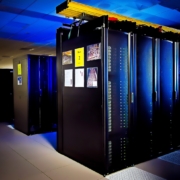EOSL Extension: When it Makes Sense, and When it Doesn’t
Last month, we wrote about end of service life (EOSL) extension and why third-party extension services can be a better investment than upgrades or extended warranties. However, the discussion on EOSL can’t end there because – inevitably and in all cases – the cost of maintaining hardware will eventually exceed the cost of replacing it.
As Jason Maxham observes in his timeless Repair or Replace,
“The need a broken machine was serving is the most important consideration: if it can be met at a lower cost some other way, fixing becomes unnecessary. If the need is still present, but has grown or diminished, then upgrading or downgrading should be on the table.”
In short, deciding whether to extend the service life of a deprecated asset reduces to a simpler question: when does it make sense to replace it?
We’ll tackle that question first by killing off two big myths about service life.
Myth #1: Deprecated Means Useless
Thinking in analogy, a systems admin might believe that keeping expired hardware around is like using Windows 98 in 2019. It’s slow, cumbersome and ridiculous – right?
Whether to upgrade involves a simple consideration: does the system still adequately serve its function? When the answer is “yes,” then retirement is unnecessary. 85 percent of hospitals instead of cell phones, simply because they work, and they work especially well in the medical environment.
Myth #2: Usable Means Useful
At the same time, most companies won’t be utilizing 4 year old servers to deploy new applications or cloud solutions. Even if it is usable, that does not make it useful. An organization’s technological need grows with the world around it.
Technical debt should not be overlooked when determining whether a system remains “useful”. Microsoft – once the world leader in consumer electronics – famously failed to win any significant share of the smartphone market simply because it came to the game too late.
Likewise, in the data center, remaining on legacy systems while competitors move onto better efficiency, power utilization and automation will cost in the long run even if it produces short term savings.
Measuring the Value of Equipment
With two myths out of the way, it’s clear that extending service life can often be the right decision up until a point. Deciding when it’s time to replace equipment means understanding and gauging its value.
- Operating value – how much value does the equipment provide an organization daily? This quant can be assessed by estimating impact of failure.
- Salvage value – although less important than other measures, the value of equipment in terms of parts or scrap is significant especially as it becomes more expensive. The salvage value of equipment also depreciates as time goes by.
- Technical value – technical value is the inverse of technical debt; if a system is still reasonably modern and will remain so for the foreseeable future, then its value is higher than a system that will be long surpassed next year.
When a data center’s operations are projected for the coming year or business quarter, the sum of these three values should exceed the cost of replacement. When that balance shifts in the opposite direction, then a data center is paying extra for the privilege of using outdated systems.
Useful Questions
Here are four useful questions administrators can use to decide whether EOSL extension is appropriate at any given time:
- Over an arbitrary period, how will the cost of third-party maintenance compare with the cost of a warranty or warranty extension?
- Are there recurrent issues with the deprecated hardware? If so, how serious are they?
- How does the latest hardware compare with current systems in terms of performance and features? (assessing technical debt)
- How costly would it be for the hardware to suffer critical failure?
- Can third-party maintenance extend the useful life to allow for migration and upgrades on your terms, not the OEM’s terms.
When enough questions have been asked and answered to assess whether EOSL extension is expedient, it can be useful to project a date past which the systems should be replaced. This gives a timeline for routine evaluations and alleviates the burden of guesswork from maintenance.
Professional EOSL Extension for Northern Virginia
Located near the booming data center corridor in Loudon County, VA, Digital Tech Inc provides rapid response maintenance services including EOSL extension, spare parts, short- and long-term maintenance agreements, migration assistance and depot repair options. Our skilled engineers offer multi-vendor support, covering IBM, HP, Dell EMC, Cisco, NetApp, and many more.
To learn more, contact us today.






